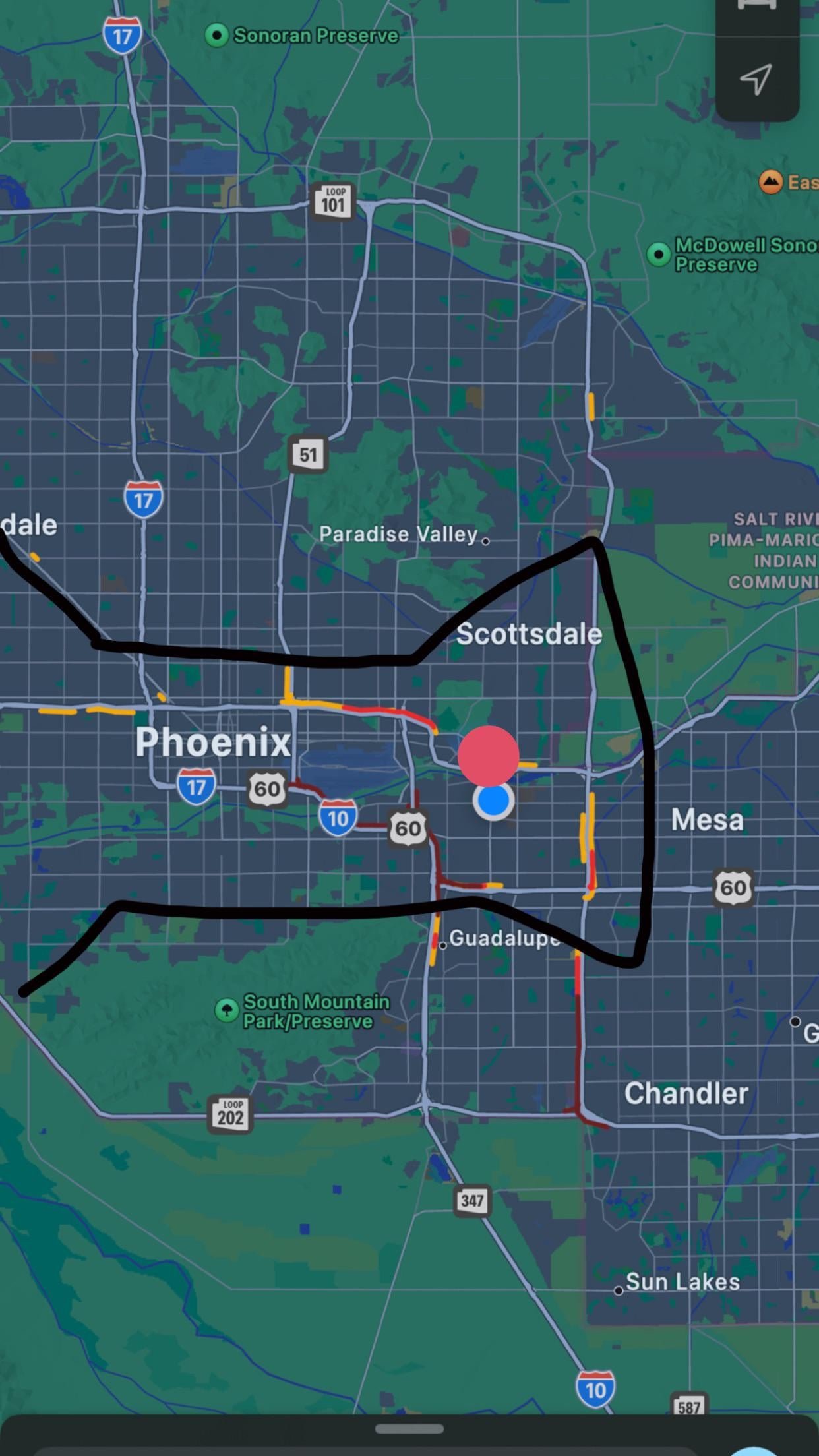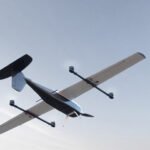Introduction
Drones have revolutionized the way we capture images, deliver packages, and even conduct surveys. As an enthusiast, you might find yourself excited at the prospect of flying your drone high above scenic landscapes or bustling cities. However, understanding the regulations surrounding drone flight, especially the height limits, is crucial for a safe and compliant flying experience. It’s not just about soaring high; it’s about knowing where you can and cannot go. This is essential to avoid accidents and remain on the right side of the law. The last thing you want is to have your flight interrupted by law enforcement or, worse, causing an incident involving manned aircraft. Let’s dive into why recognizing height limits is fundamental for all drone pilots!
Why Height Limits Matter
You might be pondering, “Why should I bother learning about height limits?” Well, here are several key reasons:
- Safety First: Ensuring you stay within height limits reduces the chances of collisions with aircraft, especially in crowded airspaces.
- Legal Compliance: Many regions have strict laws regarding how high you can fly a drone. Ignoring these can lead to legal consequences.
- Preserving Privacy: Understanding drone limits aids in respecting people’s privacy and property boundaries. It’s an aspect often overlooked by many amateurs.
- Improving Skills: Knowing the restrictions can help you develop better flying skills as you learn to maneuver within designated heights.
Personal Experience
Thinking back to my early days as a drone pilot, I mistakenly believed that flying as high as possible showcased my skill. However, after a close encounter with a manned aircraft during a seemingly harmless flight at a local park, I quickly learned the importance of adhering to height regulations. This experience taught me a valuable lesson about respecting both safety and regulations. It also led me to research extensively about drone altitude controls, which not only improved my flying but also made me a more responsible pilot.
Getting Started with Regulations
As you embark on your drone-flying journey, here are a few steps to help you navigate the world of altitude regulations:
- Research Local Laws: Each country—and often even local municipalities—has distinct regulations. Check with your local aviation authority.
- Understand the Airspace: Familiarize yourself with different types of airspace (controlled, uncontrolled, and restricted) and their associated height limits.
- Join Communities: Consider joining a drone flying community to learn from experienced pilots and share your experiences.
Navigating the world of drone regulations may initially seem overwhelming, but it’s all part of becoming a capable and responsible drone operator. In the following sections, we will delve deeper into specific regulations, safety concerns, and best practices. So grab your drone, and let’s take this adventure to new heights—safely!
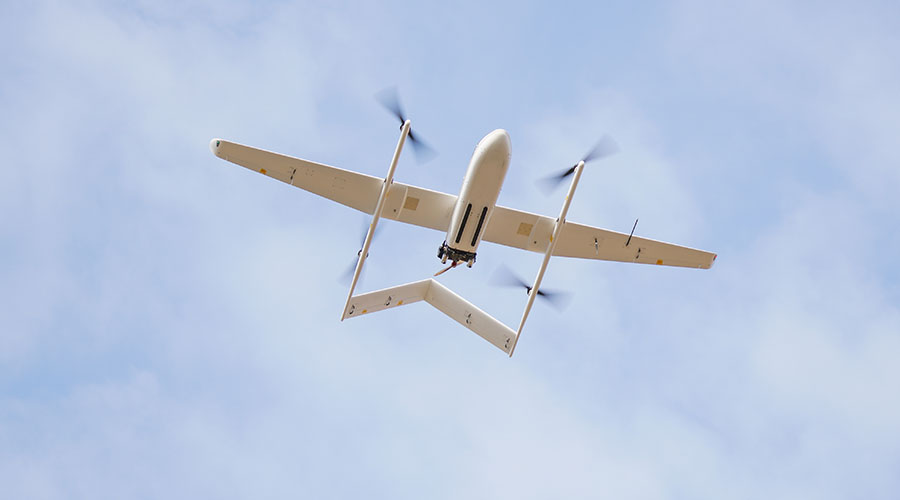
Importance of Understanding Drone Height Limits
Now that you’ve got a peek into why mastering the ins and outs of drone regulations is essential, let’s take a deeper dive into the significance of understanding drone height limits. After all, this knowledge is more than just safety precautions—it’s about ensuring your aerial adventures are enjoyable and worry-free!
The Safety Factor
When it comes to flying drones, safety should always be at the top of your priority list. Staying within the designated height limits significantly minimizes the risks associated with drone flying. Here are a few safety concerns to consider:
- Collision Avoidance: Drones are often involved in accidents with manned aircraft, especially near airports. Staying below specified height limits helps prevent such incidents.
- Ground Hazards: When flying within limits, you’re less likely to fly over crowds or densely populated areas, reducing the chances of accidents that can result in injury or property damage.
- Weather Challenges: Higher altitudes can lead to more significant weather impacts, including turbulence and wind shear. Remaining within limits ensures a smoother flight and more control over your drone.
Reflecting on my early experiences, I often felt that pushing the altitude limits would enhance my video footage. However, one day I encountered unexpected wind current while flying thousands of feet in the air. It was a truly frightening moment that taught me to always factor in both altitude restrictions and environmental conditions.
Legal Compliance
Understanding height limits is not just about safety—it’s also about ensuring you’re compliant with local and national laws. Here’s why this is crucial:
- Avoiding Penalties: Many jurisdictions impose hefty fines or penalties for exceeding height limits. Staying informed helps you steer clear of these unwanted expenses.
- License Maintenance: For commercial drone pilots, adhering to regulations is key to maintaining your pilot license. Regular infractions can lead to suspensions or revocations.
- Reputation Building: Being a responsible pilot builds your standing within the drone community and fosters trust among clients if you’re using your drone for commercial purposes.
Enhancing Your Skills
Learning and respecting height limits can also surprisingly elevate your skills as a drone pilot. Understanding what works within regulations can enhance your flying experience and help you to focus on honing your techniques. Some tips include:
- Practice Precision: Rather than simply flying as high as possible, challenge yourself to get creative with your shots at lower altitudes.
- Experiment: Get familiar with your drone’s capabilities while staying within safety margins. You’ll learn how to maneuver effectively without the added stress of breaking rules.
In conclusion, embracing the importance of understanding drone height limits not only ensures a safer flying experience but also fortifies your position as a competent and responsible pilot. As you delve further into the regulations and guidelines, you’re arming yourself with essential knowledge that enhances every aspect of drone flying. Ready to soar high—without a hitch? Let’s keep going and explore the specific regulations and restrictions next!

Regulations and Restrictions
With a solid understanding of why height limits are crucial, it’s time to dive into the regulations and restrictions that govern drone flying. These rules, whether set by civil aviation authorities or specific national organizations, play a pivotal role in ensuring that your flying experience is safe, legal, and enjoyable.
Civil Aviation Authority Guidelines
Many countries have a Civil Aviation Authority (CAA) or similar governing body responsible for regulating drone activity. Understanding these guidelines is vital to staying compliant and avoiding unnecessary fines or accidents. Here are some common regulations you might encounter:
- Maximum Altitude: In general, many CAAs recommend a maximum height of 120 meters (400 feet) above ground level for recreational drone flying.
- Restricted Areas: Areas such as airports, military installations, or national parks often have restrictions that prevent drone flights altogether or limit them to lower altitudes.
- Night Flying Rules: Some jurisdictions may prohibit flying drones at night unless you have specific permissions. Always check if your local CAA has such restrictions.
- Registration Requirements: In many instances, drones above a certain weight must be registered with the CAA before they can be flown.
Reflecting on my own experiences, when I first began flying my drone, I naively assumed there were no major restrictions. However, after a trip to a national park and a quick chat with a park ranger, I learned about the strict regulations in place. This was a valuable lesson that reinforced the need to check local guidelines before flying.
Federal Aviation Administration Rules
In the United States, the Federal Aviation Administration (FAA) has its own set of regulations for both recreational and commercial drone users. Here’s a brief overview of some key FAA rules you should be aware of:
- Part 107 Certification: If you’re looking to use your drone for commercial purposes, obtaining a Part 107 certification is a must. This includes passing an aeronautical knowledge test.
- Line of Sight: The FAA requires pilots to maintain visual line of sight with their drone during flight, which can limit your ability to fly at great heights or distances.
- Prohibited Airspace: Similar to CAA guidelines, the FAA designates prohibited airspace where drone flying is restricted, such as near airports or in certain urban areas.
- Altitude Limitations: Just like the CAA, the FAA sets a maximum altitude of 400 feet for drones, which is crucial to avoid potential conflicts with manned aircraft.
Taking my FAA certification test was an enlightening experience that opened my eyes to the many rules in place to ensure airspace safety. It was an intense studying period, but I knew it was worth it to fly confidently and legally.
Conclusion
Understanding these regulations, whether from civil aviation authorities or the FAA, is essential for every drone pilot. By learning about the guidelines and restrictions, you not only protect yourself from legal repercussions but also enhance the overall safety and enjoyment of your flying experience. In the next sections, we will explore factors affecting drone altitude, dive into safety concerns, and discuss monitoring measures. Let’s keep this informative journey in high gear!
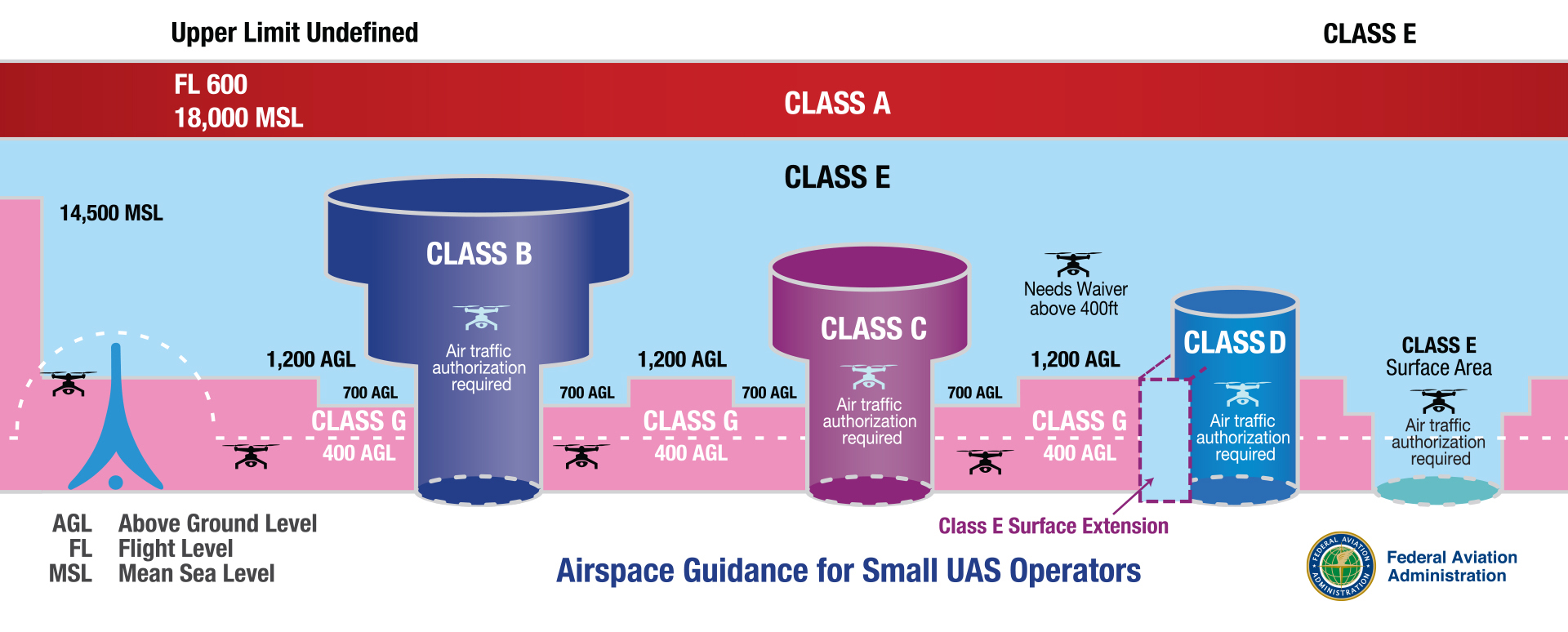
Factors Affecting Drone Altitude
Now that we’ve explored the regulations and restrictions governing drone usage, it’s important to understand the various factors that can affect altitude during your flights. Whether you’re a seasoned pilot or just starting out, recognizing these influences can significantly help enhance your flying experience and ensure the safety of your drone. Two primary factors worth delving into are weather conditions and technical limitations.
Weather Conditions
Weather plays a crucial role in drone flying, and you’ll want to keep an eye on it before taking to the skies. Various weather elements can impact your drone’s altitude, including:
- Wind Speed: Strong winds can make maintaining control of your drone at high altitudes challenging. It’s advisable to fly at lower altitudes during gusty conditions to avoid losing control.
- Fog and Rain: Low visibility due to fog or rain can hinder your ability to see your drone, making it difficult to keep it within your visual line of sight. Additionally, moisture can affect the electronic components of your drone.
- Temperature: Extreme temperatures can impact battery performance. Cold weather may reduce flight time while hot temperatures can affect the efficiency of your motors.
I vividly recall a time when I was eager to capture some aerial shots at my favorite beach during a sunny day. Mid-flight, a sudden gust of wind caught me off guard, pushing my drone several feet higher than I intended. While it was exhilarating, it also served as a reminder of how unpredictable weather can be. Since then, I check weather forecasts thoroughly before my outings.
Technical Limitations
Even the best drone technology has its limits, and recognizing these will empower you as a pilot. Here are some technical factors that can affect altitude during drone operations:
- Battery Life: The altitude you can achieve is often directly tied to your drone’s battery performance. High lifts require more power, so keeping an eye on battery levels is essential to ensure a safe descent.
- Drone Specifications: Each model has a maximum takeoff weight and altitude limit. Know your drone’s specifications to avoid exceeding these limits and risking a fly-away.
- GPS Signal: Drones rely heavily on GPS for stabilization and altitude control. In areas with weak GPS signals, such as downtown cityscapes or dense forests, your drone may struggle to maintain altitude.
In one of my earlier flights, I had a delightful experience flying my new drone until the battery alarm started beeping, reminding me to descend. Learning about battery limitations helped me avoid landing surprises in the future!
Conclusion
Understanding how weather conditions and technical limitations can affect your drone’s altitude is crucial for safe flying. Staying informed about these factors will enhance your flying experience, contribute to better decision-making, and ultimately ensure the longevity of your drone. As we move forward, we’ll explore safety concerns and risks associated with flying—let’s gear up for that discussion next!

Safety Concerns and Risks
Having explored the various factors that can impact your drone’s altitude, it’s crucial to address the safety concerns and risks associated with flying drones. As thrilling as it is to take to the skies, operating a drone presents unique challenges that every pilot should be aware of to ensure a safe flying experience.
Collision Risks
One of the most pressing safety concerns for drone pilots is the risk of collision. Whether your drone is flying too high or in restricted airspace, you need to be vigilant. Here’s what to keep in mind:
- Manned Aircraft: In many regions, drones are not allowed to exceed a certain altitude to prevent accidents with manned aircraft. Ignoring this could lead to catastrophic outcomes.
- Obstacles: Trees, power lines, buildings, and other structures pose serious hazards. Maintaining awareness of your surroundings is essential to avoid crashes.
I remember a time when I was filming a sunset over a lake. Caught up in the beauty, I failed to notice a nearby tree. Thankfully, I managed to regain control just in time, but it was a stark reminder to always scan the area and plan your flight path meticulously.
Battery Failures
While batteries have improved over the years, they can still fail. Here are some common scenarios to watch out for:
- Monitoring Battery Levels: Understand the range of your drone’s battery life, and always keep an eye on it during your flight. It’s best to land safely well before the battery runs low.
- Unexpected Draining: Sometimes, conditions like cold weather can cause batteries to drain more quickly than expected, leading to emergency landings.
I once experienced a rapid decline in battery life during a particularly cold day. Though I managed to get my drone down safely, I learned to factor in temperature when planning my flights.
Privacy Concerns
Another important safety concern revolves around privacy. Drones equipped with cameras can inadvertently invade personal privacy, leading to conflicts. Consider these points:
- Public vs. Private Spaces: Always be aware of the difference between flying in public spaces and encroaching on private property.
- Respecting Boundaries: It’s essential to respect the privacy of individuals and their property. Obtaining consent for filming or photographing is advised.
During one of my flights around a neighborhood, I was approached by a resident asking if I was recording. It made me realize how my actions could affect others and solidified my commitment to respecting privacy boundaries.
Mechanical Failures
Mechanical failures, though rare, can happen and can involve issues like motor failure or signal loss. Here are some things to consider:
- Pre-flight Checks: Always perform a thorough pre-flight inspection to detect any potential malfunctions.
- Emergency Protocols: Familiarize yourself with the emergency features of your drone—such as Return-to-Home (RTH)—which can be lifesavers in critical situations.
Conclusion
Being aware of safety concerns and risks enables you to operate your drone responsibly. While flying can be exhilarating, acknowledging the potential hazards will lead to more enjoyable and worry-free experiences. As we continue, we’ll explore monitoring and enforcement measures to keep our skies safe. Let’s get ready for that informative discussion!

Monitoring and Enforcement Measures
As we’ve explored the vital safety concerns and risks associated with drone flying, it’s essential to understand how monitoring and enforcement measures are put in place to ensure compliance with regulations. These systems serve not only to catch rule violators but also to foster a culture of safety and responsibility among all drone pilots.
The Role of Authorities
Government agencies, such as the FAA in the United States or the CAA in various countries, play a significant role in monitoring drone activities. Here’s how they operate:
- Surveillance Programs: Many jurisdictions have implemented surveillance systems to monitor drone activity. This could include radar systems and visual detection technology that keep an eye on potentially unauthorized drone flights.
- Reporting Mechanisms: Both authorities and citizens can report unsafe or illegal drone operations. User-friendly reporting systems make it easier for the public to notify agencies of non-compliant behavior.
- Partnerships with Enforcement Agencies: Local law enforcement often collaborates with aviation authorities to periodically check for compliance and enforce drone regulations. This partnership can lead to checkpoints or even drone inspections.
During one of my flying excursions, I inadvertently flew into a restricted area while trying to capture the skyline. A friendly officer approached me, equipped with a handheld device that confirmed my drone’s position. The officer was understanding, but it highlighted how actively authorities monitor airspace—another reason for pilots to stay informed.
Technological Solutions
Thanks to advances in technology, monitoring drone operations has become more effective. Here are some of the tools being utilized:
- Geofencing Technology: Many drones come equipped with geofencing features that prevent them from entering restricted airspace automatically. This is a game-changer for maintaining safety and compliance.
- Flight Tracking Apps: Some apps provide real-time tracking of drone flights and can alert pilots if they are approaching restricted areas. Using these tools is a smart way to keep yourself in check.
I’ve often used a flight tracking app when preparing for flights in urban settings. It gives me added peace of mind to visualize restricted areas and plan my route effectively.
Consequences of Non-compliance
Understanding the consequences of ignoring drone regulations is vital for fostering a responsible flying culture. Violators face:
- Fines and Penalties: Depending on the severity of the violation, fines can range from minor tickets to substantial penalties that could run into the thousands.
- Seizure of Equipment: In severe cases, law enforcement may confiscate a drone involved in illegal activities. Losing your investment is often a harsh wake-up call.
- Legal Action: Serious infractions, especially those that lead to accidents, can result in criminal charges, leading to possible jail time.
Personally, learning about these consequences has always motivated me to fly responsibly and stay updated with the rules—fines are never fun, and losing your drone can be heartbreaking!
Conclusion
Monitoring and enforcement measures are essential components of safe drone flying. By keeping a proactive approach to compliance, you not only protect yourself and your investment but also contribute to the integrity of shared airspace. With this knowledge in hand, you’re better equipped to navigate the skies responsibly. Next, we’ll delve into the world of commercial drone use and explore the unique regulations surrounding it. Let’s keep the momentum going!
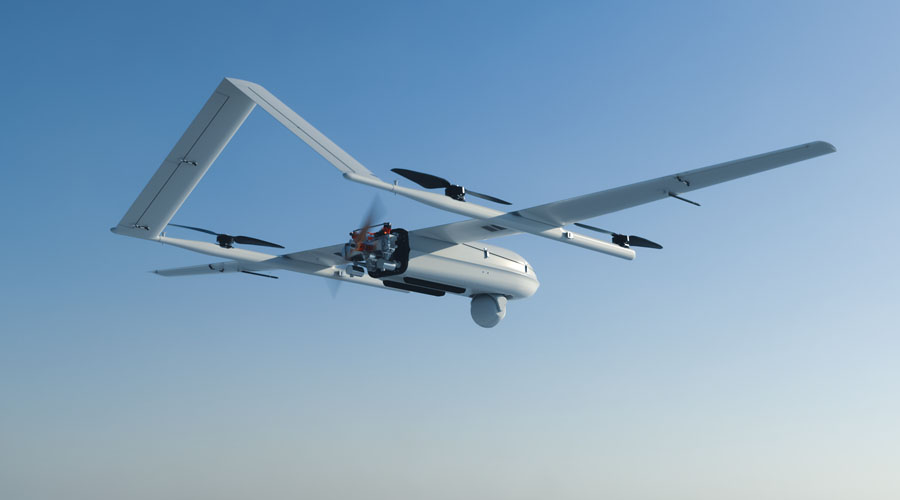
Commercial Use of Drones
Now that we’ve discussed monitoring and enforcement measures, let’s take a closer look at the commercial use of drones. The integration of drones into various industries has transformed the way businesses operate, offering innovative solutions that were once thought impossible. From aerial photography to package delivery, the applications are as diverse as they are exciting.
The Growing Drone Industry
The drone industry has seen explosive growth over the last few years, and it shows no sign of slowing down. Here are some key factors contributing to this boom:
- Technological Advancements: Drones have become more sophisticated, with improved cameras, sensors, and GPS capabilities that allow for more versatile applications.
- Cost-Effectiveness: Businesses are finding that using drones can be a more economical option compared to traditional methods. Whether it’s inspecting infrastructure or monitoring crops, drones can save time and reduce labor costs.
- Regulatory Support: As more countries recognize the potential benefits of commercial drones, regulations have evolved to facilitate their use, such as the introduction of remote identification requirements.
Having witnessed the rise of drone services firsthand, I remember attending a local commercial drone expo. It was astonishing to see how various industries, from agriculture to real estate, were leveraging drone technology, showcasing everything from crop monitoring solutions to stunning aerial photography services.
Common Applications of Commercial Drones
Commercial drones are being utilized across numerous sectors. Here are some of the most popular applications:
- Aerial Photography and Videography: Drones are widely used in the film and photography industry, providing breathtaking angles and shots that enhance storytelling.
- Real Estate: Agents use drones to showcase properties from above, giving potential buyers a comprehensive view of the surroundings.
- Construction: Drones can conduct site surveys, monitor work progress, and assist with inspections, proving invaluable to project managers.
- Agriculture: Farmers utilize drones for crop monitoring, assessing plant health, and even spraying pesticides, greatly improving efficiency.
- Delivery Services: Companies like Amazon are exploring drone delivery systems to streamline package distribution, making same-day delivery a reality.
On one occasion, I worked with a local real estate agent to capture aerial footage of a property. Not only did it enhance the listing, but it also attracted more potential buyers, demonstrating the commercial potential of what drones can offer.
Regulations for Commercial Use
While the commercial advantages are clear, it’s essential to navigate the regulatory landscape effectively. Commercial drone operators often need to adhere to specific rules:
- Part 107 Certification: In the U.S., anyone using a drone for commercial purposes must obtain a Part 107 certification, which includes completing a written knowledge test.
- Insurance Requirements: Many commercial operations require liability insurance, offering protection in case of accidents or damages.
As I embarked on my journey in commercial drone work, obtaining my Part 107 certification was a rigorous but rewarding experience. Not only did it enhance my knowledge of regulations, but it also opened doors to various business opportunities.
Conclusion
The commercial use of drones presents incredible opportunities across many industries, from enhancing creativity in film to improving efficiencies in agriculture. As regulations evolve, so does the potential for innovations in this space. Equipped with an understanding of how to leverage drones commercially, you’re well on your way to exploring this dynamic field. Up next, we’ll dive into recreational drone flying and discuss what aspiring hobbyists need to know. Let’s keep moving forward!

Recreational Drone Flying
With a clear understanding of commercial drone use, let’s shift our focus to recreational drone flying. This aspect of the hobby has captured the hearts of many enthusiasts around the globe, offering a sense of adventure and discovery from an elevated perspective. Whether you’re capturing breathtaking landscapes, exploring local parks, or simply enjoying the thrill of flight, recreational drone flying has much to offer.
Getting Started with Recreational Drones
If you’re considering soaring through the skies for fun, it’s essential to start with a solid foundation. Here are a few steps to help you kick off your recreational flying journey:
- Choose the Right Drone: There are countless options available, from beginner-friendly models to advanced drones with high-resolution cameras. Research and select a drone that fits your skill level and intended use.
- Understand the Basic Controls: Spend time getting familiar with the drone’s controls. Most users find it beneficial to practice on simulators or smaller drones before taking on larger models.
- Know the Regulations: Even as a recreational pilot, it’s crucial to know the rules. This includes adhering to altitude limits and avoiding restricted airspaces.
When I started, I invested in a small beginner drone with limited features. It allowed me to learn essential flying skills without the stress of a hefty investment, and it made the learning curve much smoother.
Benefits of Recreational Drone Flying
Flying drones recreationally is more than just a hobby; it comes with numerous benefits that can enhance your life. Some of these include:
- Creativity and Artistry: Drones equipped with cameras enable you to capture stunning aerial photos and videos. This creative outlet can lead to expanded artistic pursuits or even a new side business.
- Physical Activity: While flying a drone can seem sedentary, it often involves moving around to get the perfect shot or exploring various locations, making it a fun way to get outside and enjoy nature.
- Community Engagement: Numerous online and offline communities exist for drone enthusiasts. Joining these can help you connect with fellow hobbyists, share experiences, and even collaborate on projects.
I remember my first big flying trip with a group of fellow drone enthusiasts. Not only did we have a fantastic day capturing amazing footage of a local festival, but we also formed friendships that have continued to this day. Sharing tips and tricks with others always enhances the experience!
Safety Tips for Recreational Pilots
While flying recreationally is thrilling, safety should always be a priority. To ensure an enjoyable experience, consider the following tips:
- Stay Within Visual Line of Sight: Always keep your drone in your view during flight. This practice helps prevent unexpected obstacles and crashes.
- Watch the Weather: Monitor conditions before flying. Avoiding strong winds, rain, or low visibility will keep you safe and prevent loss of control.
- Respect Privacy: Be mindful of people’s privacy and avoid flying over private properties without permission.
On one occasion, I was so engrossed in capturing stunning footage of a beautiful sunset that I almost lost sight of my drone. Thankfully, I managed to keep it in view just in time, but it reinforced the importance of staying alert!
Conclusion
Recreational drone flying is an incredible way to embrace both creativity and adventure. As you embark on this journey, remember to stay informed about safety practices and regulations, choose the right equipment, and engage with the wonderful community of fellow drone enthusiasts. With all this in mind, let’s shift our focus to educational training for drone pilots, ensuring that everyone can enjoy flying responsibly and confidently!
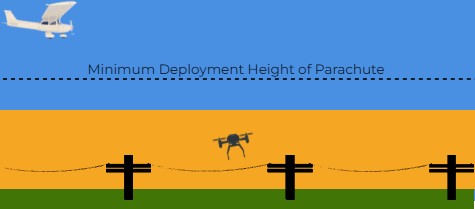
Educational Training for Drone Pilots
Having explored the exhilarating world of recreational drone flying, it’s essential to consider the value of educational training for drone pilots. Whether you’re looking to hone your skills, adhere to regulations, or pursue commercial opportunities, proper education can make all the difference in becoming a confident and responsible pilot.
The Importance of Training
Education plays a critical role in the journey of any drone pilot. Here’s why investing time in training is beneficial:
- Understanding Regulations: Comprehensive training covers the legalities surrounding drone operation. Knowing the rules will help you avoid complications and maintain compliance.
- Safety Skills: Proper instruction equips pilots with essential safety skills, including how to handle emergencies, execute controlled landings, and avoid hazards.
- Skill Development: Training allows you to refine your flying techniques. This leads to greater control and the ability to capture stunning aerial footage or perform specific maneuvers.
Reflecting on my own experience, I took a beginner’s drone course online, which vastly improved my understanding of flying techniques and regulations. It was an eye-opener to see how much there was to learn about weather conditions and navigation!
Types of Training Programs
Whether you’re a beginner or an experienced pilot, there are various options to enhance your flying abilities:
- Online Courses: Many platforms offer structured online training programs tailored to different skill levels. These often include videos, quizzes, and interactive elements to help reinforce learning.
- In-Person Classes: Local flight schools or drone clubs may offer workshops where you can receive hands-on training from experienced instructors and practice real-time flying in a controlled environment.
- Certification Programs: For those interested in commercial flying, enrolling in certification courses, such as FAA Part 107 training in the U.S., is mandatory. These programs will prepare you for the required examinations and practical skills.
When I decided to pursue my Part 107 certification, my training course provided valuable insights into airspace classifications and navigation charts. The hands-on elements made it engaging and ensured I was well-prepared for the final test!
Resources for Aspiring Pilots
Here are some valuable resources and platforms that can aid you on your training journey:
- AUVSI: The Association for Unmanned Vehicle Systems International offers various online resources, webinars, and forums for drone enthusiasts.
- Online Learning Platforms: Websites like Udemy and Coursera have multiple drone courses ranging from beginner basics to advanced aerial cinematography.
- YouTube Channels: Many experienced pilots share tutorials and tips on channels dedicated to drone flying. It can be a great way to supplement your training.
I found watching various YouTube channels particularly helpful as I prepared for my own flying practices. Seeing the techniques demonstrated in real-time made the learning process much more approachable!
Conclusion
Educational training for drone pilots is an invaluable investment that enhances skills, ensures safety, and fosters responsible flying. Whether you choose online courses, in-person workshops, or certification programs, the knowledge you gain will prepare you for a successful journey as a drone pilot. With this understanding of training, let’s turn our focus to future trends and technologies in drone regulations, as well as how they may shape the landscape of flying in the years to come!

Future Trends and Technologies in Drone Regulations
Having explored the importance of educational training for drone pilots, it’s now time to look ahead and consider the future trends and technologies that are likely to shape drone regulations. As the drone industry continues to evolve at a rapid pace, so does the landscape of rules and regulations governing their use.
The Rise of Autonomous Drones
One exciting trend is the increasing prevalence of autonomous drones. As technology improves, we can expect:
- Enhanced Safety Features: Autonomous drones are equipped with advanced sensors and AI technology that allows them to detect obstacles, avoid collisions, and make real-time decisions. This could significantly reduce accidents and enhance compliance with altitude and airspace regulations.
- Operational Efficiency: Businesses leveraging autonomous drones for tasks such as delivery or surveying could operate with greater efficiency and reliability, leading to heightened demands for regulatory adaptations that accommodate these advancements.
I remember being captivated by a demonstration of an autonomous drone system that could fly itself, delivering packages seamlessly to designated locations. The possibilities for this technology are not only impressive but also necessitate thoughtful regulatory considerations to manage safety and logistics.
Remote Identification Technology
Another significant development on the horizon is the widespread implementation of remote identification (Remote ID) for drones. Here’s why this is important:
- Enhanced Accountability: Remote ID systems allow authorities to identify and track drones in real-time, similar to how aircraft transponders work. This makes it easier to enforce regulations and manage airspace safety.
- Public Safety Improvement: With Remote ID, the public will have increased confidence in drone operations, knowing that pilots can be identified in case of irresponsible flying or incidents.
I had the opportunity to attend a forum discussing the future of Remote ID, and it became clear how valuable this technology could be in fostering a culture of responsible drone usage.
Data Privacy and Cybersecurity Regulations
As drones become more integrated into daily life, data privacy and cybersecurity concerns will be increasingly critical. With the personal data collected through drone photography, surveillance, or even package delivery, here are some considerations:
- Stricter Privacy Regulations: Future regulations may necessitate that drone pilots take explicit measures to protect the privacy of individuals. This could involve acquiring consent for capturing images or ensuring data is securely stored and not misused.
- Cybersecurity Protocols: As drones become more connected to the internet and other networks, regulations will likely emerge to safeguard against hacking and other cyber threats, ensuring that operational integrity is maintained.
Recalling my experiences with drones equipped with cameras, I often think about the ethical implications of privacy, especially when flying in populated areas. Future guidelines will undoubtedly help clarify these responsibilities for all pilots.
Conclusion
The future of drone regulations is shaping up to be as dynamic as the technology itself. With trends toward autonomous flying, Remote ID, and increased attention on data privacy and cybersecurity, regulations are evolving to keep pace with innovation. As a drone pilot, staying informed about these trends is essential for future compliance and to embrace the opportunities that lie ahead. With this foresight in mind, you’ll be well-prepared for the exciting journey of drone piloting, whether for recreational or commercial purposes. Happy flying, and be ready to adapt!
